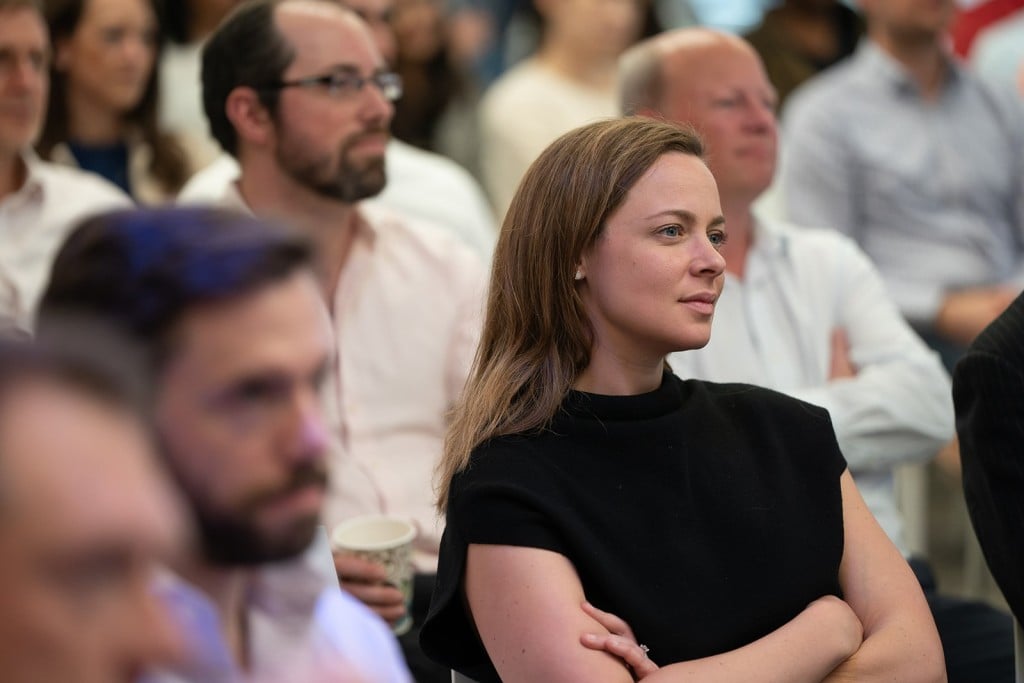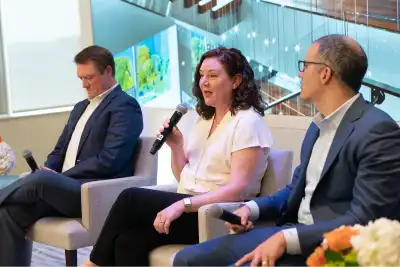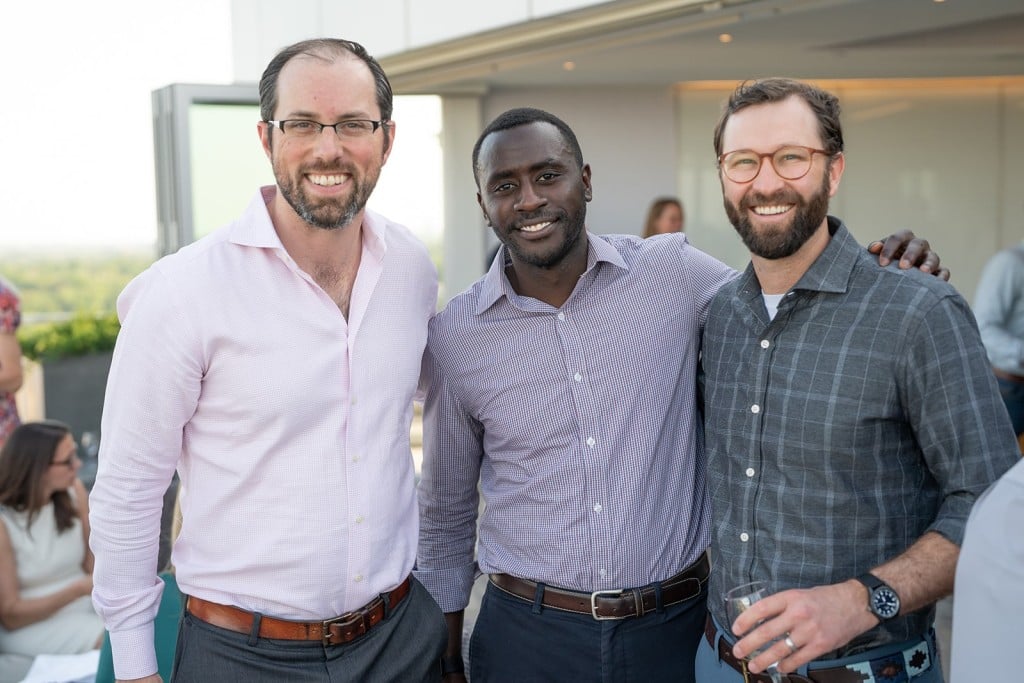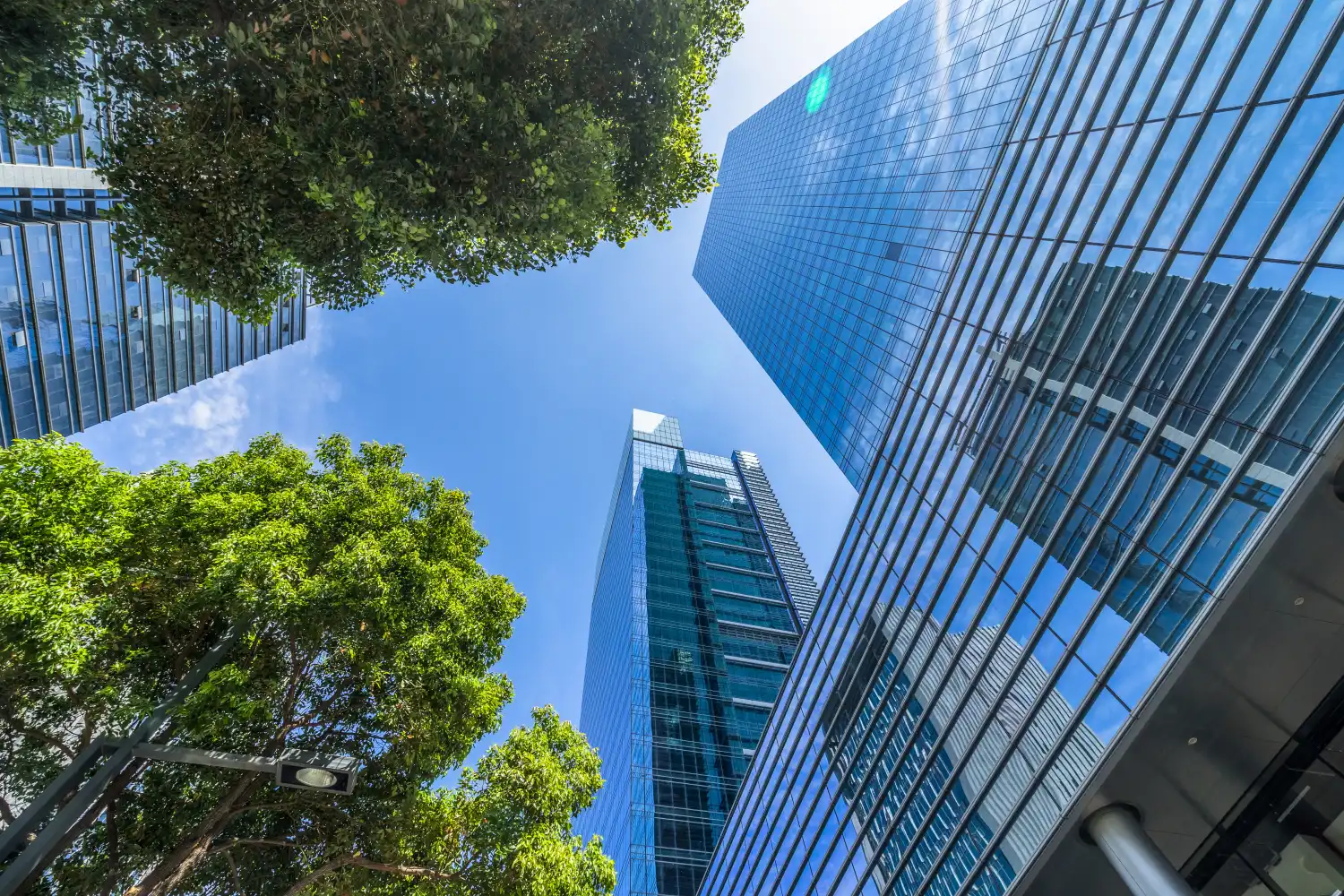Related Videos
Consumer spending is a huge part of the global economy, and we’ve found that businesses that can harness the power of the internet to put their products in front of millions of customers at once have an edge. Research Analyst Katherine Okon explains why she favors those companies that combine digital and physical operations.
Transcript
Challenges and Opportunities of Investing in Ecommerce
There are both challenges and opportunities when it comes to investing in ecommerce here at Sands Capital. To begin with, consumer spending is a huge component of global GDP [gross domestic product], which creates a really big opportunity. But that’s really just the starting point for us. What we have to do is find companies that meet our investment criteria. And what I found is that it can be hard to find companies that meet our criteria around leadership and sustainable growth in particular, I passed on a lot of companies for that reason, and I’ve spent a lot of time thinking about why that is. I think a lot of it comes down to the fact that in consumer, there’s a decades-long—maybe even centuries-long—trend toward more and more specialization.
There’s a piece of apparel for every activity you could want to partake in today. There’s a snack for every diet. And when you see more specialization like that, it means that there’s more fragmentation, which means that it can be much more difficult to find clear leadership positions.
What you can find is really robust growth, and that’s been particularly true over the past decade or so, enabled in large part by the internet because a company with one great product can put that product in front of millions of consumers all at once.
The problem is that growth isn’t always sustainable because, a lot of times, those companies with just one product don’t have a real innovation engine that can sustain growth for years to come.
So even though direct-to-consumer (D2C) investing has been a really big trend over the past decade or so, we’ve passed on largely all of the traditional D2C companies. Where we focused our attention instead has been on companies that combine a digital presence with a physical moat.
Combining Digital and Physical Operations
Two companies that have pursued the strategy of combining digital and physical operations are Coupang in Korea and MercadoLibre, which operates in Brazil and the broader Latin American region as well.
So Coupang took the strategy of owning the entire customer journey that starts with warehouses that they build and stock themselves. It goes to vans that they’re also stocking themselves, and it ends at a consumer’s doorstep. It’s their delivery people who are actually dropping off the consumer’s order.
There’s never any point in the delivery chain where they’re handing it off to a third-party provider. Doing all this was a controversial decision in Korea because two-day delivery had actually been the standard for over 20 years.
But Coupang thought that there was an opportunity to improve the consumer experience, and they have. They have a program called Dawn Delivery which allows a consumer to place an order before midnight and have it delivered to their doorstep at 7 a.m.
They also—because they are doing all the packing and stocking of the vans themselves—they’re able to do that in the order in which the items are going to be dropped off at a consumer’s doorstep. So that means that the actual delivery process is much more efficient. It also means that they are able to not put boxes around many of the items.
So you save money on costs in terms of both packaging and dead space within vans. And it’s also a much more sustainable way to do ecommerce delivery.
For MercadoLibre in Brazil, it was Brazil’s infrastructure that was the impetus for them to take ownership of the entire fulfillment and logistics footprint. Brazil’s infrastructure can be tough in a lot of places. Many cities aren’t very well connected.
Highways are frequently only two lanes, and a lot of roads aren’t even paved. So MercadoLibre, by building out its own fulfillment footprint, they’re able to bypass a lot of these issues. They’ve actually got a fleet of airplanes which allows them to, you know, not deal with the roads at all.
As a result of this, MercadoLibre today is delivering over 50 percent of its orders either same- or next-day compared to the competition, which can take as long as a week to get delivered. Actually, sometimes as long as a month, which obviously is not a great consumer experience.
It took Coupang and MercadoLibre years and billions of dollars to build out this footprint. A lot of people questioned the soundness of these decisions. They were wondering if these companies would ever actually be profitable. But we are seeing profitability from both of these companies today, and, importantly, growth is really holding up as well. Both of the companies are outgrowing their broader industry and their peers as well.
DoorDash’s Path to Profitability
DoorDash is a company here in the United States that’s earlier in its path to profitability. It’s a company that we know well. We’ve been looking at it since the 2018–2019 time frame. Back then, it was Grubhub that was the undisputed leader in food delivery here in the United States.
The problem is all Grubhub was doing was matching consumers with restaurants. They didn’t actually have to do any of the delivery of the food. DoorDash came in, and they handled the entire journey from the customer placing an order to a Dasher who’s actually delivering the food to a customer’s doorstep.
This was a much better consumer experience. Delivery times were frequently faster. You could do things like actually look on your app and see when your food was going to be getting to you. And it allowed many, many more restaurants to actually offer food delivery. So because of this, DoorDash was able to grow the entire size of the industry.
Back in 2018, food delivery was a $10 billion to $15 billion industry. Today in 2023, we think it’s on a path to be close to a $100 billion industry here in the United States. So DoorDash has become the clear leader here in food delivery here in the United States.
But the debate right now centers around its path to profitability.
The company, when you look at the consolidated financial statements, generates positive EBITDA [earnings before interest, taxes, depreciation, and amortization], it does not generate GAAP [generally accepted accounting principles] earnings today. And that causes a lot of investors to look at DoorDash and other food delivery companies around the world and say this is a business that will never be profitable.
But we know that the core U.S. restaurant food delivery business actually is profitable already today. You just can’t see that the way that they report their numbers. What’s happening is that DoorDash is using those profits to invest into other areas that are attractive and, you know, tangential to the business that they have already built. So this includes grocery and convenience delivery here in the United States and international expansion as well.
We think these investments make a lot of sense. We also know that the profitability of that core business is continuing to increase. And because of that, because DoorDash is structurally increasing its profits, this is very different from what the competition is doing this year primarily, which is mostly increasing the fees that they charge to both merchants and consumers.
So DoorDash’s profitability is increasing in a much more structural way, and it’s allowing them to outgrow the competition. This year, it’s on track to do about 20 percent to 25 percent growth. Whereas most of the other entrants, people in the food delivery industry are either declining or just growing in the single digits.
And one thing that we’ve seen here at Sands Capital time and time again is that great businesses are able to build one core business that is where they have a leadership position and that throws off profits that they then use to go and invest into other areas that make sense and allow them to give consumers reasons to come back to the platform time and time again. It can tie in more closely other merchants who are a component of their ecosystem and eventually creates a really sustainable competitive advantage that allows the company to grow for years to come.
Disclosures:
The views expressed are the opinion of Sands Capital and are not intended as a forecast, a guarantee of future results, investment recommendations, or an offer to buy or sell any securities. The views expressed were current as of the date indicated and are subject to change. This material may contain forward-looking statements, which are subject to uncertainty and contingencies outside of Sands Capital’s control. Readers should not place undue reliance upon these forward-looking statements. There is no guarantee that Sands Capital will meet its stated goals. Past performance is not indicative of future results. A company’s fundamentals or earnings growth is no guarantee that its share price will increase. Forward earnings projections are not predictors of stock price or investment performance, and do not represent past performance. References to companies provided for illustrative purposes only. The portfolio companies identified do not represent all of the securities purchased or recommended for advisory clients. There is no assurance that any securities discussed will remain in the portfolio or that securities sold have not been repurchased. You should not assume that any investment is or will be profitable. GIPS Reports found here.
As of February 10, 2024, Coupang was held in the Global Leaders, Emerging Markets Growth. Emerging Markets ex-China, Emerging Markets Discovery, Technology Innovators, International Leaders, and Global Shariah strategies. DoorDash was held in Select Growth, Global Growth, Technology Innovators, and Global Shariah. MercadoLibre was held in Global Growth, Emerging Markets Growth, Emerging Market ex-China, Technology Innovators, and International Growth.
The companies identified represent a subset of current holdings in Sands Capital portfolios and were selected to illustrate the largest ecommerce platforms in the United States, Developed ex-Asia, and Latin America.
This material is for informational purposes only and does not constitute an offer, invitation, or recommendation to buy, sell, subscribe for, or issue any securities. The material is based on information that we consider correct, and any estimates, opinions, conclusions, or recommendations contained in this communication are reasonably held or made at the time of compilation. However, no warranty is made as to the accuracy or reliability of any estimates, opinions, conclusions, or recommendations. It should not be construed as investment, legal, or tax advice and may not be reproduced or distributed to any person.
In the United Kingdom, this communication is issued by Sands Capital Advisors – UK Ltd (“Sands UK”) and approved by Robert Quinn Advisory LLP, which is authorised and regulated by the UK Financial Conduct Authority (“FCA”). Sands UK is an Appointed Representative of Robert Quinn Advisory LLP. This material constitutes a financial promotion for the purposes of the Financial Services and Markets Act 2000 (the “Act”) and the handbook of rules and guidance issued from time to time by the FCA (the “FCA Rules”). This material is for information purposes only and does not constitute an offer to subscribe for or purchase of any financial instrument. Sands UK neither provides investment advice to, nor receives and transmits orders from, persons to whom this material is communicated, nor does it carry on any other activities with or for such persons that constitute “MiFID or equivalent third country business” for the purposes of the FCA Rules. All information provided is not warranted as to completeness or accuracy and is subject to change without notice. This communication and any investment or service to which this material may relate is exclusively intended for persons who are Professional Clients or Eligible Counterparties for the purposes of the FCA Rules and other persons should not act or rely on it. This communication is not intended for use by any person or entity in any jurisdiction or country where such distribution or use would be contrary to local law or regulation.
RO# 3161760













